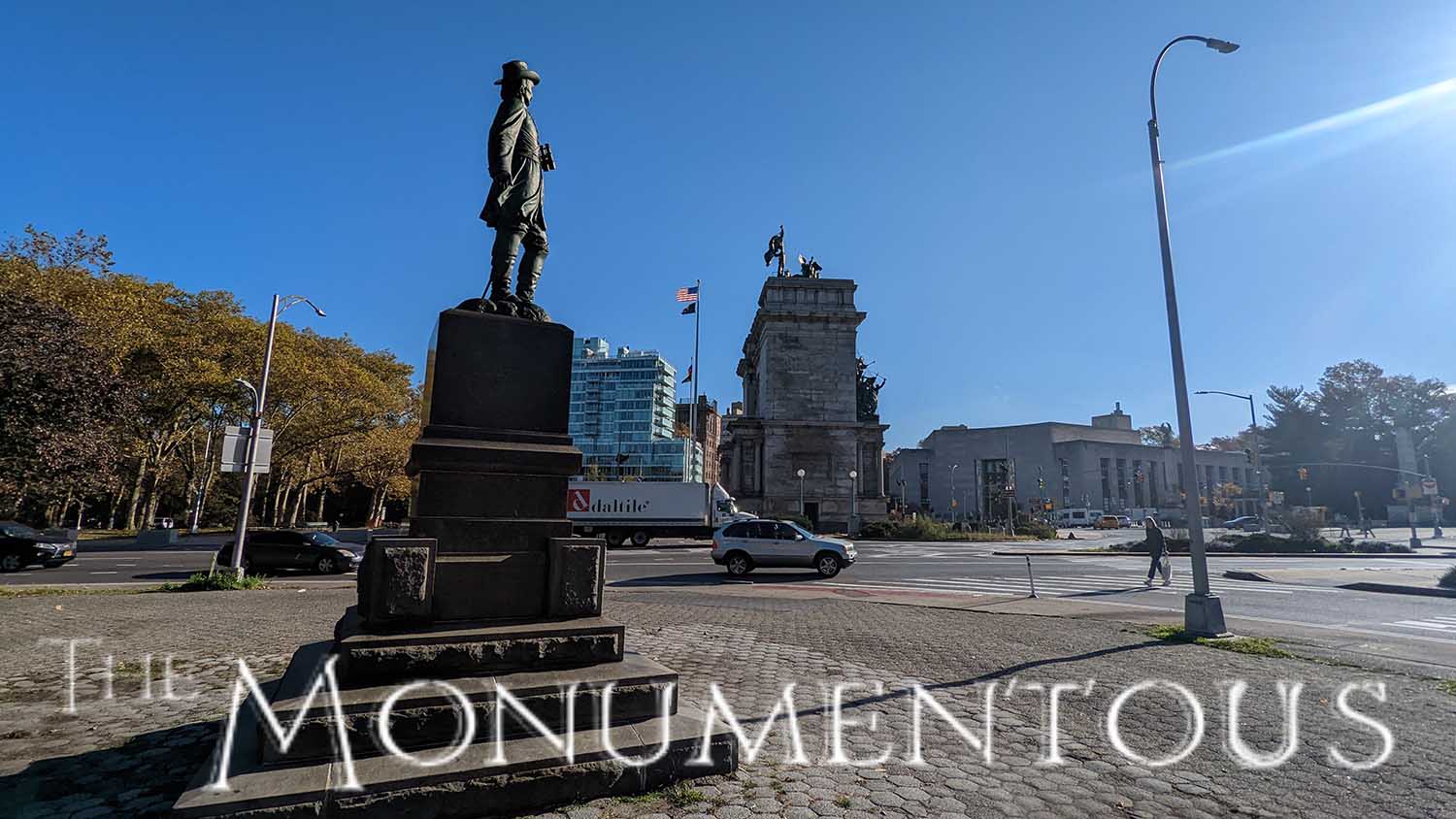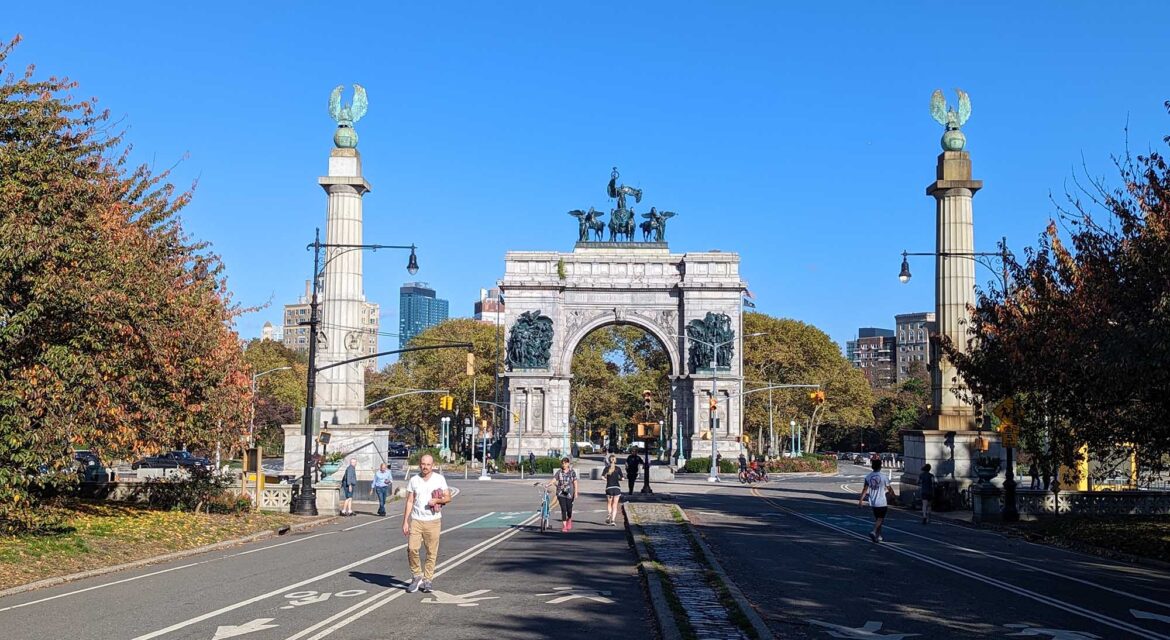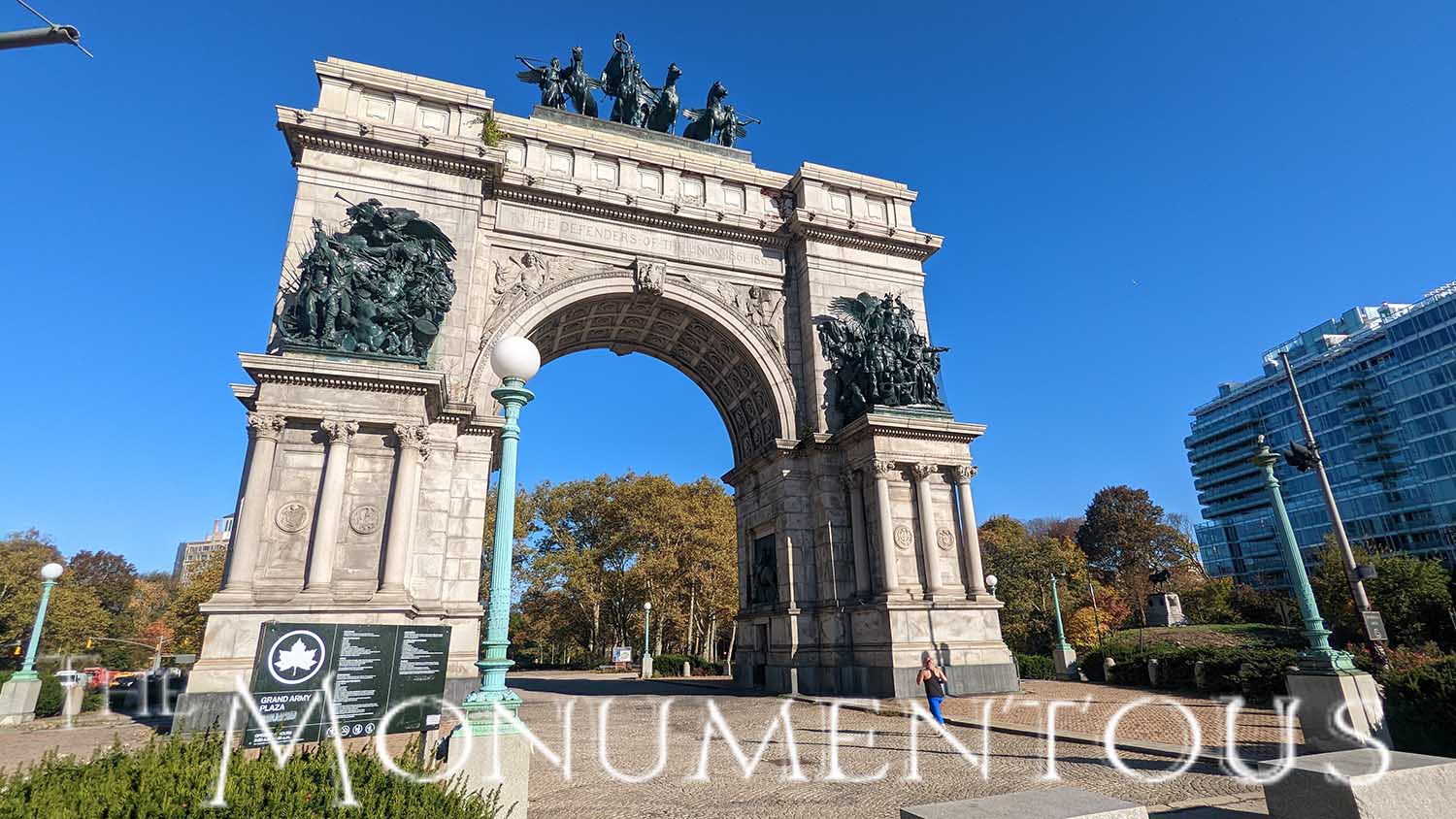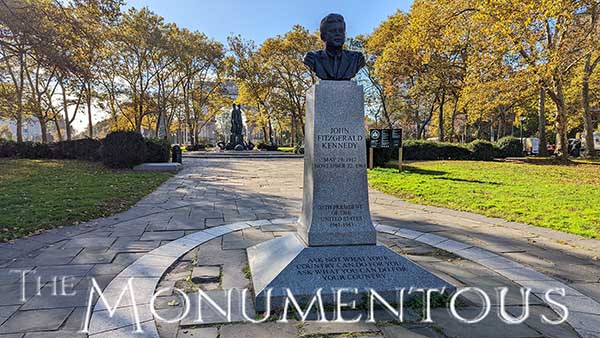 Designed to provide a scenic approach into Brooklyn’s Prospect Park, Grand Army Plaza has provided the area with a strong sense of identity that permeates New York City’s most populous borough. Mentioned as one of the borough’s most important gathering points, Grand Army Plaza contains a triumphal arch, distinctive fountain, and numerous monuments that have created unrivaled engagement for both residents and visitors.
Designed to provide a scenic approach into Brooklyn’s Prospect Park, Grand Army Plaza has provided the area with a strong sense of identity that permeates New York City’s most populous borough. Mentioned as one of the borough’s most important gathering points, Grand Army Plaza contains a triumphal arch, distinctive fountain, and numerous monuments that have created unrivaled engagement for both residents and visitors.
Connected to the Origins of Prospect Park
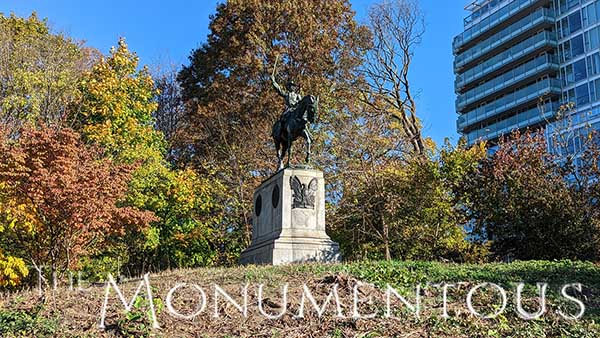 One of the first features of Prospect Park to be built, what was originally known as Prospect Park Plaza has a history that goes back to the Civil War-era 1861 plan for the area. Defined as an elliptical piece of land at the main entrance to the park, it began to develop notable features with the construction of the Soldiers’ and Sailors’ Arch that began in 1889. Honoring members of the Union Army, the Arch is the most notable feature of Grand Army Plaza but many more have been added to create additional connections with the space and city.
One of the first features of Prospect Park to be built, what was originally known as Prospect Park Plaza has a history that goes back to the Civil War-era 1861 plan for the area. Defined as an elliptical piece of land at the main entrance to the park, it began to develop notable features with the construction of the Soldiers’ and Sailors’ Arch that began in 1889. Honoring members of the Union Army, the Arch is the most notable feature of Grand Army Plaza but many more have been added to create additional connections with the space and city.
Four Doric columns were added between 1894 and 1896, while a bronze statue of Henry Warner Slocum that depicts the Civil War general on his horse with a raised sword in his hand debuted in 1905. Bailey Fountain was installed in 1932 and features six monumental bronze figures bronze in an Art Deco design. Nearby, a bust of John F. Kennedy honors the assassinated 35th President of the United States. The landmark was added in 1965.
Prospect Park Plaza officially became Grand Army Plaza in 1926. The Arch was designated an official city landmark at this time, while in 1975 the entire Grand Army Plaza was designated as well. These developments are just a hint at the impact it has enabled for the city and audiences though.
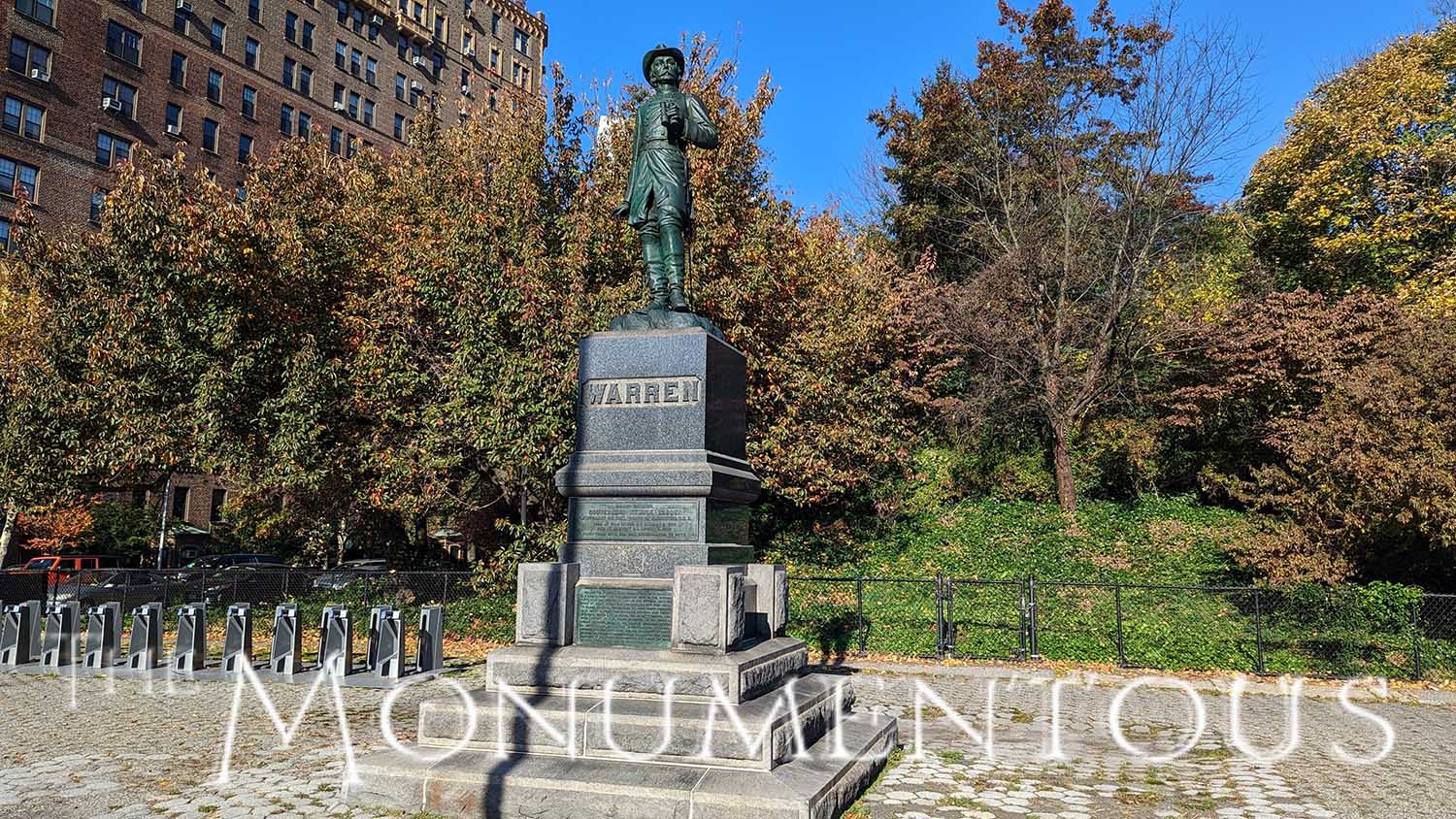
Practicality and Engagement
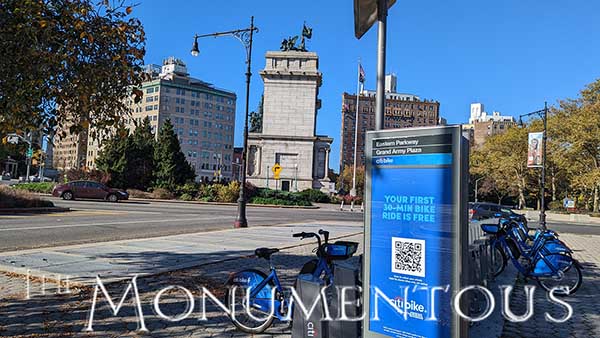 The practical purpose of Grand Army Plaza goes back to the origins of the site, as the space was intended to connect New York City’s parks with ornamental roads free of commercial traffic. Today, eight streets converge on Grand Army Plaza’s two concentric ring roads.
The practical purpose of Grand Army Plaza goes back to the origins of the site, as the space was intended to connect New York City’s parks with ornamental roads free of commercial traffic. Today, eight streets converge on Grand Army Plaza’s two concentric ring roads.
Hosting political protests, rallies and a regular farmers’ market, the space is also a hub for the community. Attracting the attention of both residents and visitors has allowed Grand Army Plaza to develop notable revenue opportunities that are directly realized in the space but also reflected in how the identity of the landmark is showcased throughout the city.
Brooklyn Parks officials estimated that over 11 million people visited Prospect Park in its first five years of operation. Many more visit the space on an annual basis today, highlighting what it can mean for a landmark to have such an impact on a space and audiences across the eras.
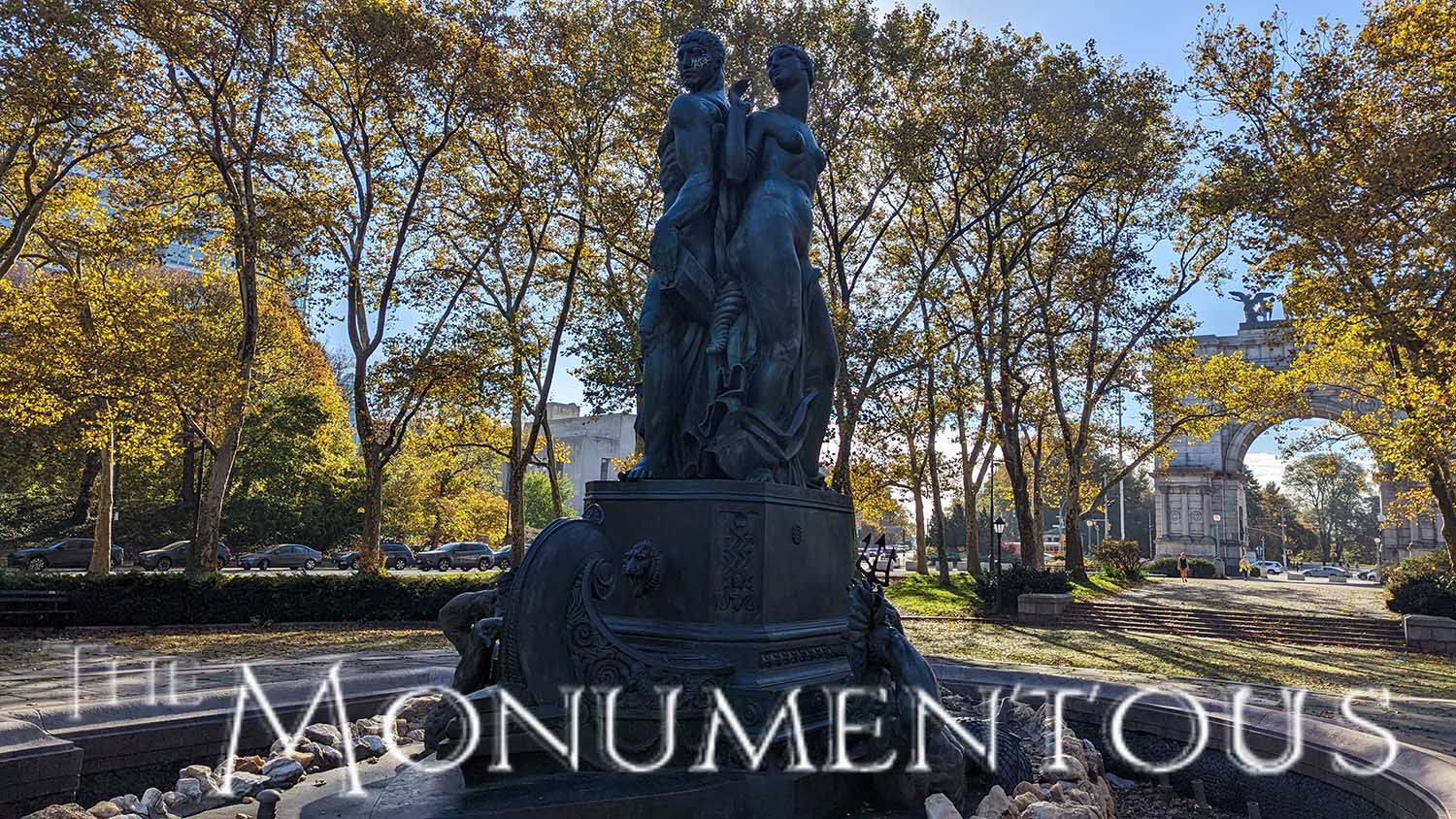
A Hub for Brooklyn
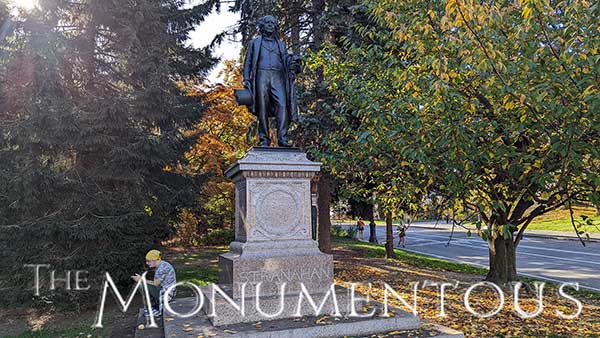 A regular meeting point for locals and visitors, Grand Army Plaza enables multiple types of connections for audiences of all types. By serving a practical function as well as providing a means of identity for Brooklyn and all of New York that others can engage and connect with, Grand Army Plaza highlights what it can mean when the entrance of a park becomes something much more.
A regular meeting point for locals and visitors, Grand Army Plaza enables multiple types of connections for audiences of all types. By serving a practical function as well as providing a means of identity for Brooklyn and all of New York that others can engage and connect with, Grand Army Plaza highlights what it can mean when the entrance of a park becomes something much more.
